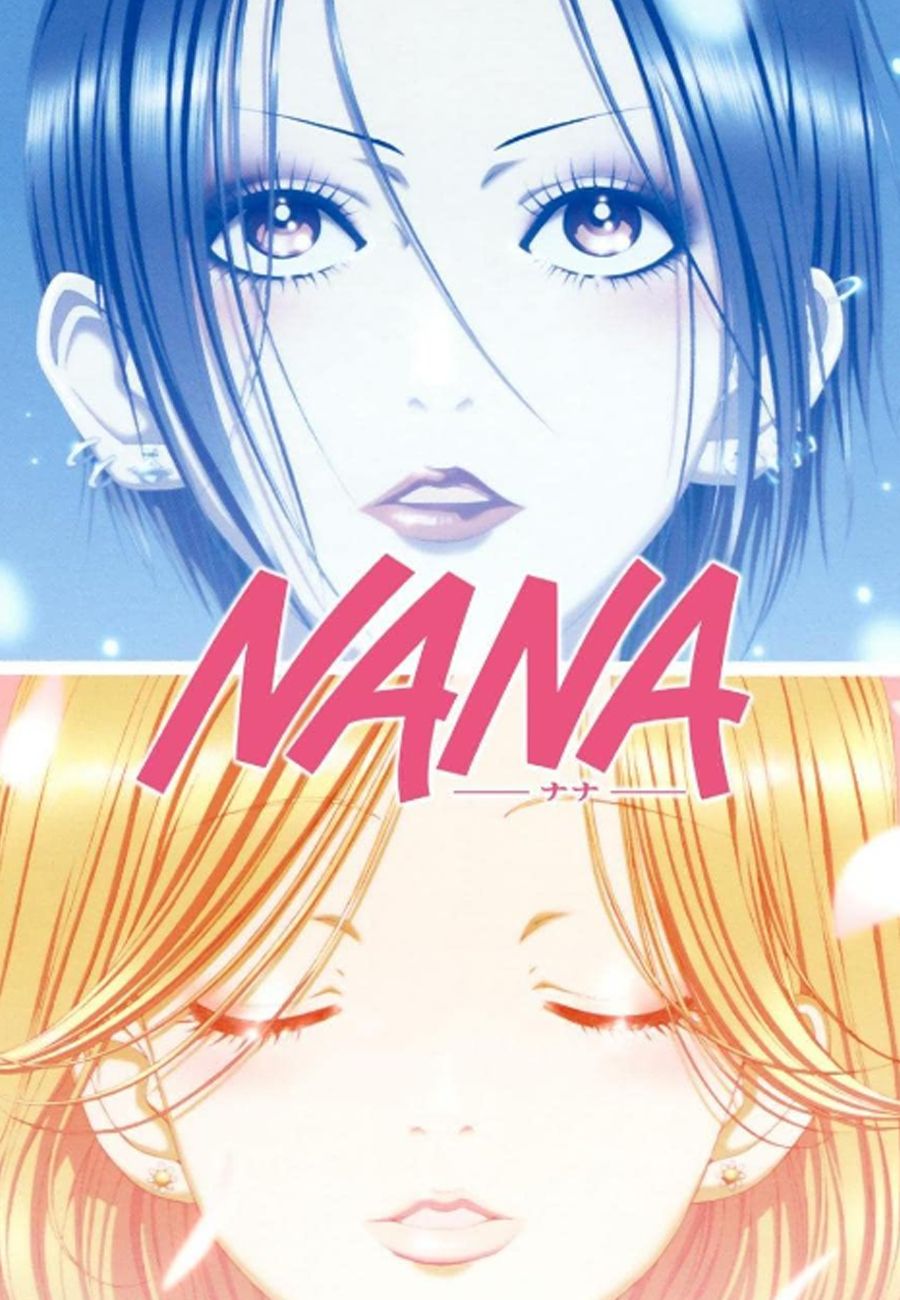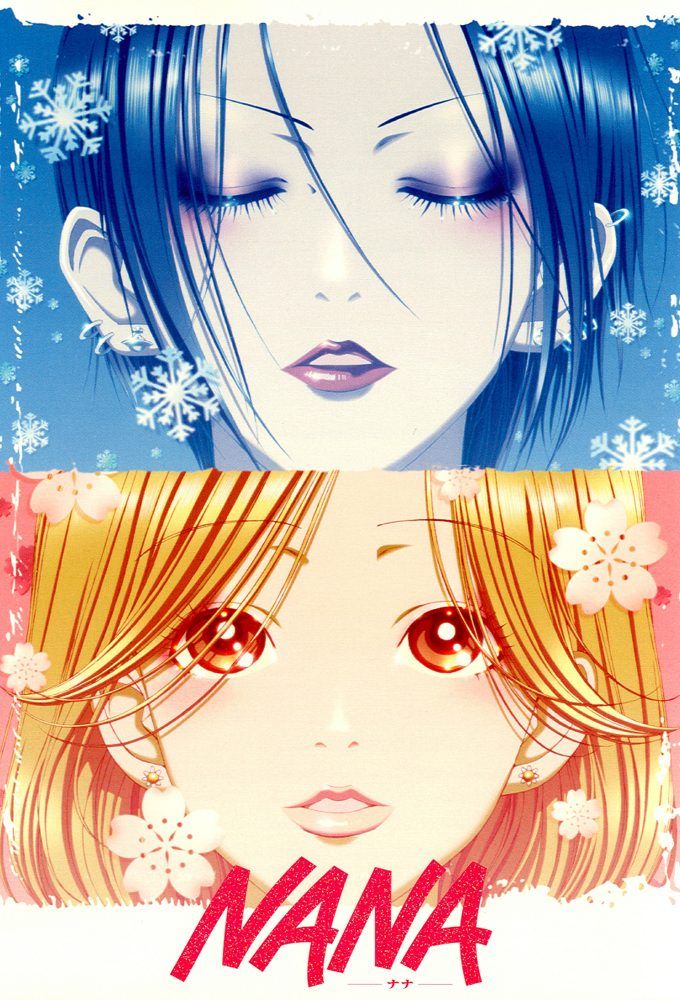Unveiling NANA: Ai Yazawa's Timeless Tale Of Dreams & Reality
Step into a world where punk rock anthems clash with quiet domestic dreams, where ambition wars with affection, and where two women, both named Nana, navigate the tumultuous currents of life in Tokyo. This isn't just another shojo manga; it's a raw, unflinching exploration of human relationships, aspirations, and the often-harsh realities that shape us. While the initial request mentioned "Nana Calistar," the provided data overwhelmingly points to Ai Yazawa's critically acclaimed manga and anime series, NANA. This article delves deep into the captivating universe of NANA, unraveling its complex characters, profound themes, and enduring impact on fans worldwide.
For many, especially those accustomed to the high-octane battles of shonen series like Dragon Ball, Naruto, One Piece, or Slam Dunk, the realm of shojo manga might seem overly sentimental or clichéd, filled with "Mary Sue" protagonists and improbable love triangles. However, NANA shatters these preconceptions, offering a narrative so deeply human and nuanced that it transcends genre boundaries. It’s a story that resonates with its audience because it dares to portray life's messy truths, making it a masterpiece that continues to captivate and challenge its readers and viewers.
Table of Contents
- The Genesis of NANA: Ai Yazawa's Masterpiece
- A Tale of Two Nanas: Opposites Attract and Collide
- Navigating the Labyrinth of Love and Ambition
- NANA's Unflinching Realism: Beyond Shojo Tropes
- The Enduring Legacy and Unfinished Symphony of NANA
- NANA's Resonance: A Personal Connection for Many
- Beyond the Pages: NANA's Impact on Media and Culture
- A Brief Look at Lim Jin-ah (Nana): A Different Icon
The Genesis of NANA: Ai Yazawa's Masterpiece
Written and illustrated by the renowned Ai Yazawa, NANA (stylized as nana) is a Japanese manga series that first captivated readers with its unique blend of drama, romance, and music. Serialized in Shueisha's Cookie magazine from 2000 to 2009, the series quickly gained a dedicated following for its mature themes and distinctive art style. Its popularity led to an anime adaptation produced by Madhouse, which aired on NTV from April 5, 2006, to March 28, 2007. Both the manga and anime are widely celebrated for their depth and emotional resonance, earning NANA a place as a modern classic in the shojo genre, challenging its conventions and pushing its boundaries.
A Tale of Two Nanas: Opposites Attract and Collide
At the heart of NANA lies the compelling dynamic between its two titular protagonists, Nana Osaki and Nana Komatsu. Despite sharing the same name, these two young women are as different as night and day, representing two contrasting approaches to life, love, and ambition. Their chance encounter on a train to Tokyo and subsequent decision to become roommates sets the stage for a narrative rich with emotional complexity and realistic struggles.
Nana Osaki: The Punk Rock Dreamer
Nana Osaki is the embodiment of punk rock defiance and unwavering ambition. With her striking appearance, powerful voice, and intense demeanor, she arrives in Tokyo with a singular goal: to make it big in the world of rock 'n' roll with her band, Black Stones. Her life, as the data suggests, is largely "gambled" on her relationship with Ren Honjo, the guitarist of the rival band Trapnest and her former bandmate and fiancé. Nana's past is marked by abandonment and a fierce independence, which she channels into her music and her relentless pursuit of a rock star dream. She is fiercely loyal to those she cares about, but her deep-seated fears of abandonment often manifest as emotional walls and a reluctance to fully commit to anything beyond her music and her connection with Ren.
Nana Komatsu (Hachi): The Quest for Love
In stark contrast, Nana Komatsu, affectionately nicknamed "Hachi" (meaning "eight" in Japanese, a playful nod to her name and a distinction from Nana Osaki), is an outgoing, somewhat flighty young woman driven by a profound desire for love and marriage. Her life revolves around finding romantic fulfillment, often leading her into complicated relationships. Hachi comes from a stable past but possesses a "weak will," making her susceptible to external influences and prone to falling "in love at first sight." While her journey to Tokyo is motivated by a desire to follow her then-boyfriend, Shoji, her subsequent encounters with various men, particularly Takumi, shape her path in unexpected ways. The narrative highlights Hachi's perspective that meeting Takumi was a "very fortunate thing" for her, even as Nana Osaki might consider introducing them her "biggest regret." This dichotomy perfectly encapsulates the subjective nature of human experience within NANA.
The two Nanas, despite their initial differences, become inseparable, forming a bond that is both profound and fragile. Their relationship is the emotional anchor of the series, showcasing how even the most disparate personalities can find common ground and offer each other solace and challenge in a whirlwind world of love, music, fashion, and gossip.
Navigating the Labyrinth of Love and Ambition
NANA is not just a story about friendship; it's a deep dive into the intricate and often painful complexities of romantic relationships and the sacrifices demanded by ambition. The series meticulously dissects the emotional entanglements of its characters, portraying love not as a fairy tale, but as a challenging, multifaceted journey fraught with jealousy, insecurity, and difficult choices.
The Complexities of Ren and Nana's Love
The relationship between Nana Osaki and Ren Honjo is arguably the most tragic and central love story in NANA. Despite being engaged, both characters are fiercely dedicated to their respective music careers, unwilling to compromise their dreams for the sake of the other. This creates a constant tension, a push and pull between their intense love and their individual ambitions. The data reveals that before his untimely death, Ren and Nana were in a "cold war," fueled by the immense pressure of their careers and their inability to reconcile their personal desires with their professional demands. Ren's struggles with addiction, compounded by the pressures of fame, further strained their already fragile bond. Their story serves as a poignant reminder of how even the strongest love can be undone by external pressures and internal conflicts, leaving behind a profound sense of loss and regret.
Takumi's Web: Love, Possession, and Trapnest
Takumi Ichinose, the charismatic and manipulative leader of Trapnest, introduces another layer of complexity to the romantic landscape of NANA. His relationship with Hachi is a central point of contention and discussion among fans, often sparking the question: "Does Takumi truly love Hachi, or is it merely out of possessiveness?" Takumi is a master manipulator, pulling strings behind the scenes, as seen when he forces Nobu to make a choice. The very name of his band, Trapnest, is telling: "Trapnest means a bird's nest full of traps; once you fall in, you can't get out on your own." This perfectly encapsulates Takumi's approach to relationships, particularly with Hachi and his long-standing, complicated dynamic with Trapnest's vocalist, Reira Serizawa. His actions often leave characters trapped in situations they struggle to escape, highlighting the darker side of fame, power, and desire in NANA.
Beyond these central pairings, NANA explores a myriad of other relationships, including Hachi's initial love for Shoji, her tender connection with Nobu, and the intricate bonds within both Black Stones and Trapnest. Each relationship is portrayed with a raw honesty that reflects the real-world challenges of commitment, betrayal, and self-discovery.
NANA's Unflinching Realism: Beyond Shojo Tropes
What truly sets NANA apart from many of its contemporaries, particularly within the shojo genre, is its bold commitment to realism. The series actively subverts common tropes, offering a narrative that is far from the "Mary Sue" fantasies or overly dramatic "dog-blood love triangles" often found elsewhere. Instead, NANA delves into the gritty, often painful realities of adult life, showcasing characters who are deeply flawed, make questionable decisions, and face genuine consequences.
The characters in NANA grapple with universal themes such as financial struggles, the pressures of fame, drug addiction, infidelity, unplanned pregnancies, and the constant tension between personal happiness and professional ambition. There are no easy answers or clear-cut villains; every character is a product of their experiences, motivations, and insecurities. The narrative doesn't shy away from depicting the sacrifices required to pursue dreams, the compromises made in relationships, and the emotional toll of a life lived in the public eye. This unflinching honesty, combined with the series' unique narrative structure that frequently employs flash-forwards and flashbacks, creates a sense of foreboding and melancholy, hinting at future heartbreaks and unresolved conflicts. This realistic approach is precisely why NANA resonates so deeply with a diverse audience, including those who might typically avoid shojo manga, as it mirrors the complexities of their own lives.
The Enduring Legacy and Unfinished Symphony of NANA
Despite its immense popularity and critical acclaim, the manga series of NANA remains unfinished. Ai Yazawa went on an indefinite hiatus in 2009 due to health issues, leaving fans worldwide eagerly awaiting its conclusion. This unresolved status has only deepened the series' mystique and impact. As the data suggests, "before Ai Yazawa-sensei finished NANA, everyone has their own ending for NANA in their hearts." This sentiment perfectly captures the unique relationship fans have with the series. The incomplete narrative forces readers to actively engage with the story, pondering the fates of their beloved characters and imagining their own conclusions to the complex web of relationships and ambitions.
The enduring legacy of NANA extends beyond its narrative. It has left an indelible mark on Japanese pop culture, influencing fashion, music, and storytelling. Its realistic portrayal of young adulthood, its exploration of alternative lifestyles, and its iconic character designs have inspired countless artists, musicians, and fashion enthusiasts. Even years after its last published chapter, NANA continues to be a topic of fervent discussion on platforms like MyAnimeList, the world's most active online anime and manga community and database, and Zhihu, a high-quality Q&A community and original content platform in the Chinese internet, where fans dissect plot points, analyze character motivations, and share their hopes for a potential return. This continued engagement is a testament to the series' profound emotional depth and its ability to create characters and situations that feel incredibly real and relatable.

Iconic Anime That Only Have One Season

Nana - Anime (2006) - SensCritique

Nana Manga Covers